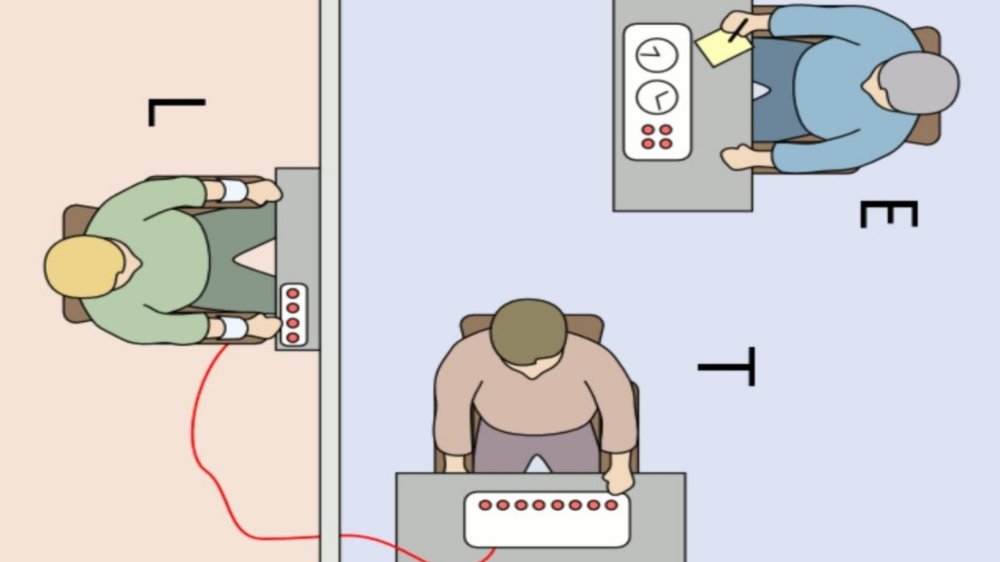What You Need To Know About The Milgram Experiment
Stanley Milgram's obedience experiment at Yale University is one of the most famous, albeit unethical, psychological experiments to come out of the 20th Century. Placing an ad for participants in the New Haven Register and offering each volunteer $4 an hour, Milgram attracted hundreds of people between 1961 and 1962 who thought they were only taking part in "a scientific study of memory and learning," reports The Atlantic.
Of course, that wasn't the case at all. Once the participants were in a room with the experimenter, they were assigned the role of "teacher." In another room, the "learner" was hooked up to an electric-shock machine. The teacher was then instructed to read out a series of words for the learner to repeat, and to administer an electric shock whenever the learner got an answer wrong, increasing the voltage with each subsequent error. The shocks ranged from a slight shock of 15 volts all the way up to 450 volts, a setting that was accompanied by the warning: "Danger: severe shock." As they raised the voltage, they could hear the learner screaming, crying in pain, and begging for the shocks to stop.
Despite the participants' hesitation and obvious distress at what they were being asked to do, most people continued to administer the shocks at the urging of the experimenter. Sixty-five percent of the participants went all the way up to 450 volts, administering shocks that would have been potentially fatal — had they been real.
An explanation for atrocities?
But they were only simulations, and the "learner," Jim McDonough, was in on the experiment. Milgram believed his experiment proved that ordinary people, when directed by an authority figure, would behave in ways that ran counter to their own moral or ethical beliefs. In October 1963, he published his findings in the Journal of Abnormal and Social Psychology, making a clear link between obedience to authority and the atrocities committed by the Nazis.
In the years following World War II, people were desperate to understand how something as terrible as the Holocaust could have happened, and Milgram's experiment seemed to offer at least part of an explanation. Ever since its publication, the experiment's findings have been used explain how human beings could do terrible things to one another while under the influence of authority, and has been pointed to as an explanation for atrocities ranging from the Holocaust to Abu Ghraib, where American forces brutalized Iraqis, as The New Yorker reported.
Does Milgram's experiment hold up today?
The experiment has since been deemed unethical by the American Psychological Association's 1973 standards of utilizing human research subjects, and the restrictions placed on using human subjects set by the National Research Act of 1974, according to Behavioral Scientist. More recently, the experiment's validity has been called into question, with some people questioning if Milgram's subjects were really unaware that the shocks were fake, or if there were issues with Milgram's methodology and data. Still other researchers have wondered if particular cultural moments and values influenced the results of the experiment, raising the question of whether Milgram's findings would still hold up today.
A 2015 replication of the Milgram study, using lower levels of voltage, appears to show that they do. In fact, participants complied with authority at even higher rates than in the original experiment, per Sage Journals, suggesting that Milgram's landmark findings still hold significance in today's world.


